5 Best Credit Card for Young Adults: Benefits & Rewards
Choosing the right credit card is a pivotal moment, especially for young adults stepping into financial independence. However, not all credit cards are ideally suited for young adults.
After reviewing these credit card features, I’ve provided key insights that every young adult should know when selecting their first or next credit card.
Table of Contents
Best Credit Card for Young Adults
Discover it Secured Credit Card
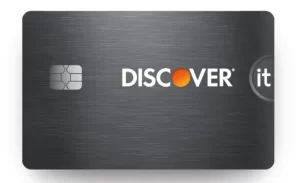
Designed for individuals seeking to build or rebuild their credit history, it functions like a traditional credit card but requires a security deposit as collateral to establish your credit line.
Starting seven months after you get a secured card and become a member, Discover reviews your account monthly to potentially return your security deposit while you continue to enjoy card benefits.
Benefits
- Credit Building: Regular reporting to the three major credit bureaus helps establish or rebuild credit history.
- Security Deposit as Credit Line: Your credit line equals your security deposit, giving you control over your credit limit.
- Potential Return of Deposit: Discover conducts monthly reviews after seven months to evaluate whether they can return your security deposit.
- Acts Like a Traditional Credit Card: Despite being secured, it offers the same utility as a standard credit card.
Discover Pros
Discover Cons
American Express Blue Cash Everyday Card
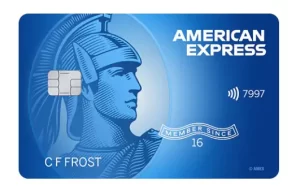
The American Express Blue Cash Everyday Card is a well-rounded credit card that offers attractive cashback rewards, particularly beneficial for everyday spending. The card is especially advantageous for purchases at U.S. supermarkets, U.S. online retail stores, and U.S. gas stations, with a cashback rate of 3% for eligible purchases in these categories.
Benefits
- Cash Back Rewards: 3% cash back at U.S. supermarkets, online retail purchases, and gas stations on up to $6,000 per year in purchases for each category, then 1%.
- No Annual Fee: This card does not incur an annual fee.
- Car Rental Loss and Damage Insurance: Coverage for rental vehicle damage or theft under certain conditions.
- Flexible Payment Options: The Plan It feature allows for flexible payment plans for purchases.
- Additional Card Benefits: Earn cash back faster by adding additional cards for family and friends
Blue Cash Pros
Blue Cash Cons
Quicksilver Rewards for Students
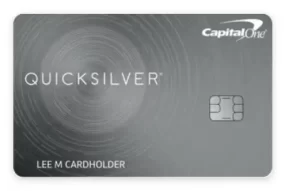
The Quicksilver Rewards for Students from Capital One is a credit card designed specifically for students, offering a range of benefits tailored to their needs.
It features an unlimited 1.5% cash back on every purchase, a $0 annual fee, and a $50 cash bonus for new card members who meet specific spending requirements. The card is accessible to students at various educational institutions, including 4-year universities and community colleges.
Benefits
- Student-Friendly: Available to students across various higher education institutions.
- Flexible Rewards Redemption: You can redeem rewards for any amount, and they do not expire.
- Instant Purchase Notifications: Stay informed about spending with real-time notifications.
- Exclusive Shopping and Travel Benefits: Cardholders can access Capital One Shopping and Capital One Travel and use their rewards on Amazon.com and PayPal.
Quicksilver Pros
Quicksilver Cons
Chase Freedom Rise
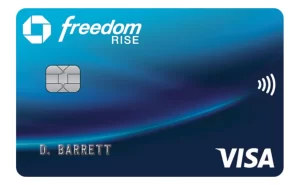
Chase designed the Freedom Rise Credit Card to help users build credit while earning cashback on all purchases. It offers a straightforward rewards program and additional features to improve credit scores and manage finances effectively.
Benefits
- Cash Back Rewards: Earn 1.5% cash back on all purchases, with no categories to track.
- $25 Statement Credit: Earn a $25 statement credit for enrolling in automatic payments within the first three months.
- Credit Limit Increase: Potential for a credit line increase after as soon as 6 months of responsible card use.
- Free Credit Score: Access to Chase Credit Journey to track and learn about building credit.
- No Annual Fee: The card comes with no annual fee.
Chase Freedom Pros
Chase Freedom Cons
Capital One VentureOne Card
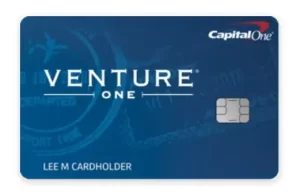
The Capital One VentureOne credit card is a versatile option for those who frequently love to travel and shop. It offers 1.25 miles per dollar on every purchase and 5 miles per dollar on hotels and rental cars booked through Capital One Travel.
Benefits
- Unlimited Rewards: Earn 1.25 miles per dollar on every purchase and 5 miles per dollar on travel bookings.
- Low Intro APR: Enjoy 0% intro APR for 15 months on purchases and balance transfers.
- No Annual Fee: The card comes without an annual fee.
- No Foreign Transaction Fees: Ideal for international travelers as there are no fees on foreign transactions.
- Miles Transferability: Flexibility to transfer miles to various travel loyalty programs.
- Capital One Travel: Special prices and flexible payment options on travel bookings.
VentureOne Pros
VentureOne Cons
What to Look for in a Credit Card as a Young Adult
Building Credit History
Building a good credit history is essential to financial independence, often perplexing many young adults. When you’re just starting, the world of credit can seem intimidating and fraught with pitfalls and challenges. But let’s untangle this.
In its simplest terms, credit history is essentially a record of your borrowing and repaying habits. A robust credit history will make your future financial endeavors significantly easier by making you more attractive to potential lenders.
Obtaining a credit card is an excellent first step towards building that much-needed credit history. Remember, though, it’s all about demonstrating responsible use and paying it off on time.
You want to utilize your card for small-scale purchases initially and then pay off these expenditures promptly and in full each month. By doing so, you’re effectively showing lenders that you can manage debt responsibly. This reliable behavior morphs into positive entries on your credit report, facilitating the growth of your overall credit score over time.
Rewards and Benefits
Another significant aspect you should consider when selecting your credit card is the rewards and benefits they offer. Some cards provide generous cashback options, reward points, travel points, discounts, and sign-up bonuses.
Cashback rewards are a popular choice as they allow you to earn back a percentage of the money you spend on your card. Often range from 1% -5%, depending on the card and category of spending. For instance, some cards give you higher cash rewards on groceries or gas.
Travel rewards cards also make a fantastic choice if you frequently travel. They grant air miles for every dollar spent, which you can redeem for airline tickets. Some travel cards also give complimentary access to airport lounges, free checked bags, and priority boarding.
Certain credit cards offer reward points as another form of bonus. You can trade these points for merchandise, gift cards, or cashback to your account.
Interest Rates and Fees
Look out for the interest rates and fees when choosing a credit card. The Annual Percentage Rate (APR) is the price you pay for borrowing money. You will need to be more diligent about paying off your balance in full each month. A high APR can quickly lead to significant debt.
As a young adult, particularly if you’re new to credit cards, you’re unlikely to qualify for the lower rates. It’s worth shopping around and comparing offers.
Many credit cards come with various fees, such as annual fees, cash advance fees, foreign transaction fees, late payment fees, and over-limit fees.
While some cards waive the annual fee for the first year or offer no annual payment, others can charge hefty sums that could negate any rewards or benefits earned through card usage.
Before settling on a particular credit card offer, read their terms and conditions thoroughly to understand potential costs.
Managing Your Credit Card
Setting Up Alerts
Getting your first credit card is exciting but comes with much responsibility. One crucial aspect of managing your credit card debt is setting up alerts. Most or all credit card companies offer mobile and email notifications about card usage, payment due dates, and any changes to your account.
Setting up these alerts can be a lifesaver. You never know if you are too busy and forget to make a credit card payment or you get notified of a large purchase you never made, and it was a fraud.
Additionally, it can act as a deterrent against impulsive large buys. When you know you’ll receive an immediate notification after an expensive purchase, you may think twice before swiping that card.
Regular Monitoring
Vigilance is what you’re saying when it comes to maintaining healthy credit card habits, and that’s where regular account monitoring comes into play.
It’s not about obsessing over every penny but instead keeping an eagle eye for unusual transactions and staying aware of how much you’re spending.
Mobile apps that allow you to check in on your bank account whenever you wish, offering real-time updates. Using these tools can keep you from overspending or missing a payment.
Some even categorize your purchases so you can see where most of your money is going – groceries, gas, entertainment? This knowledge gives you the power to adjust your spending accordingly.
Moreover, regular monitoring will help you detect any fraudulent activity quickly. The faster such discrepancies are noticed and reported, the quicker your bank resolves them.
Making Timely Payments
I want to stress the importance of consistently paying your bills before or by their due date each month. It helps you sidestep costly late fees and positively impacts your credit score.
This credit score factor is what lenders scrutinize when deciding whether to approve a loan or mortgage application in the future. About 35% of your credit score hinges on your on-time payment history.
Therefore, even a single late payment can strike a severe blow to that hard-earned credit score you’ve been nurturing over time. But don’t let it discourage you if you miss one on-time payment; remember for next time.
Common Mistakes to Avoid
It’s easy for young adults to make some unanticipated mistakes when managing their credit cards.
Overspending
Finding the right balance with your spending can take time and effort, mainly when dealing with your first credit card. You have the ability to spend as much as on a credit card and want to go on a buying spree.
You must avoid being an overspender. Failing to do so leads to an unmanageable debt pile, damages your credit score, and potentially results in financial hardship.
Being aware of your spending habits is crucial. If you notice that you consistently exceed your monthly budget or the amount you owe on your card increases every month, it’s time for self-reflection and a potential change in spending habits.
Ignoring Terms and Conditions
Ignoring credit card terms and conditions can trap uninformed young adults. The legal jargon-filled documents can be lengthy and convoluted, leading to confusion and mistakes.
However, brushing them aside can lead to unwelcome surprises down the line. The terms and conditions of credit cards define your agreement with your card issuer.
They outline everything from your interest rate to various fees (annual fee, late payment fee, etc.), rewards program details, and what actions could lead to a change in your interest rate or even termination of your account.
Understanding these details will inform you how much any slip-up might cost, when, and how you’ll receive rewards for good behavior, such as making timely payments or spending on specific categories. Here’s an example: Did you know that many credit cards come with a grace period?
It’s the time between the end of your billing cycle and when your payment is due – sometimes as long as 21 days – during which no interest accrues on new purchases as long as you’ve been paying off your balance in full each month prior.
Late Payments
The last mistake that is problematic is the issue of late payments. It’s important to understand that delinquent credit card payments do more than just incur late fees; they can also significantly impact your credit score.
Late payments have the potential to drastically decrease this score, thereby making it harder for you to secure loans in the future. What happens when a payment is late?
Well, typically, there are two scenarios. Credit card companies may charge you a penalty fee if your payment is less than 30 days overdue, but it won’t report it to the major credit bureaus, hence no impact on your credit score yet.
However, once your payment becomes 30 days past due, we’re talking real trouble! This delinquency gets reported and could severely dent your credit rating.
Young adults should consider setting reminders or scheduling automatic payments. This way, they can ensure they pay their monthly bills on time.
Closing Thoughts
Choosing your credit card can seem intimidating, but by reviewing the best credit cards for young adults offered in this article and with the information and understanding, it doesn’t have to be. Managing a credit card is about more than finance—cultivating responsibility, commitment, integrity, and decision-making foresight.

